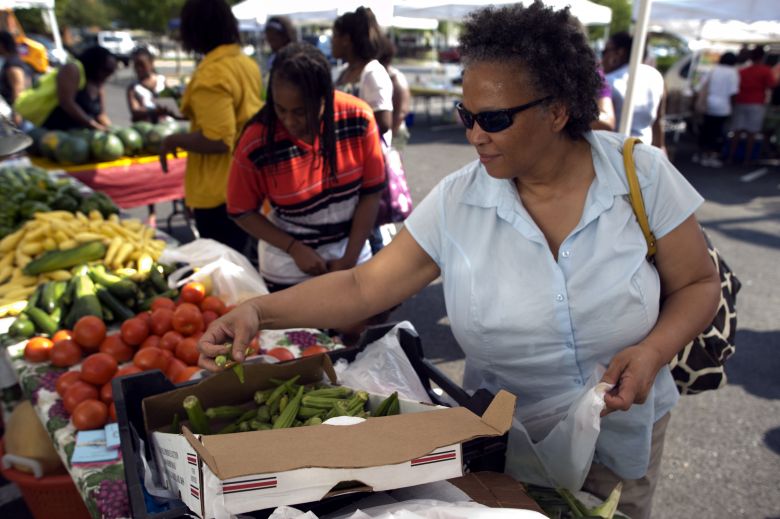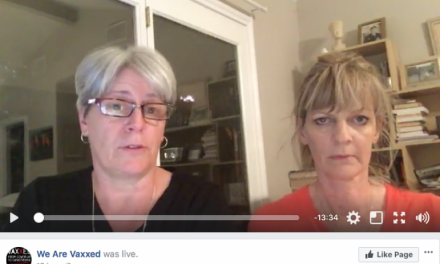
Many urban farmers markets now accept nutrition assistance programs like WIC and SNAP, but those weekly shopping opportunities aren’t as reliable as the brick-and-mortar markets that can help develop healthy habits. (Photo: ‘The Washington Post’/Getty Images)
Farmers Markets Are Actually Cheap
By Steve Holt
A new study suggests lack of information—not price—is what keeps low-income individuals away.
In the beginning, it was about access: Get fresh produce into low-income areas to give residents healthier food choices.
“The markets are out there to be utilized,” says Jennifer Obadia, who oversees and standardizes the use of benefits at Boston farmers markets for the Boston Collaborative for Food and Fitness. “We’re really pretty close in terms of having an infrastructure for farmers markets making a dent on food access issues. We built it, now how do we make them come?”
A new report, released last week by the Project for Public Spaces, sets out to answer that question—and Obadia says it has already been helpful in shaping practices for the future. In the report—“Farmers Markets as a Strategy to Improve Access to Healthy Food for Low-Income Families and Communities”—researchers analyzed market financial data and surveyed a sampling of individuals in eight mostly low-income communities served by farmers markets across the country.
The report, published by PPS, with support from the Robert Wood Johnson Foundation and Columbia University, shed light on what residents are looking for in a market—and it may have even busted a few stereotypes along the way.
A key finding in the report was that among both those who shop at farmers markets and those who don’t, price is not as big a deterrent as some had previously thought. Sixty percent of farmers market shoppers surveyed believed their market had better prices than the grocery store, and just 17 percent of non-farmers market shoppers cited price as a deterrent.
Healthy Food for Low-Income Families and Communities
The report also found that if market organizers want lower-income neighbors to come, information is key. Letting residents know when and where the market operates is crucial, researchers found, as a high percentage of those surveyed who do not shop at farmers markets cited the lack of scheduling info as a main reason they opt for the grocery store. Many residents also remained unaware of the various payment methods accepted at the market, including nutrition assistance programs like SNAP and WIC.
“The study lets us know that we’re on the right track in regards to marketing being something that we really do need to focus on,” Obadia says. “That even though I know you can use SNAP at the farmers market’ and all my colleagues know there are special WIC coupons you can use at farmers’ markets, it doesn’t mean that everyone that uses SNAP and WIC knows about it.”
Curiously, the report barely mentions cultural barriers at all.
“As far as being a touchstone outlet for folks to purchase healthy, affordable, local food products, I do think the access is there,” Obadia says. “That being said, we are hearing from folks who are interested in starting new markets too.”
 ABOUT THE FOUNDER OF HEALTH NUT NEWS
ABOUT THE FOUNDER OF HEALTH NUT NEWS
Erin Elizabeth is a long time activist with a passion for the healing arts, working in that arena for a quarter century. Her site HealthNutNews.com is less than 2 years old, but has already cracked the top 20 Natural Health sites world-wide. She is an author, public speaker, and has recently done some TV and film programs for some of her original workwhich have had international media coverage. You can get Erin’s e-book for free here and also watch a short documentary on how she overcame vax injuries, Lyme disease, a significant weight gain, and more. Follow Erin on Facebook, Twitter, and Instagram.











